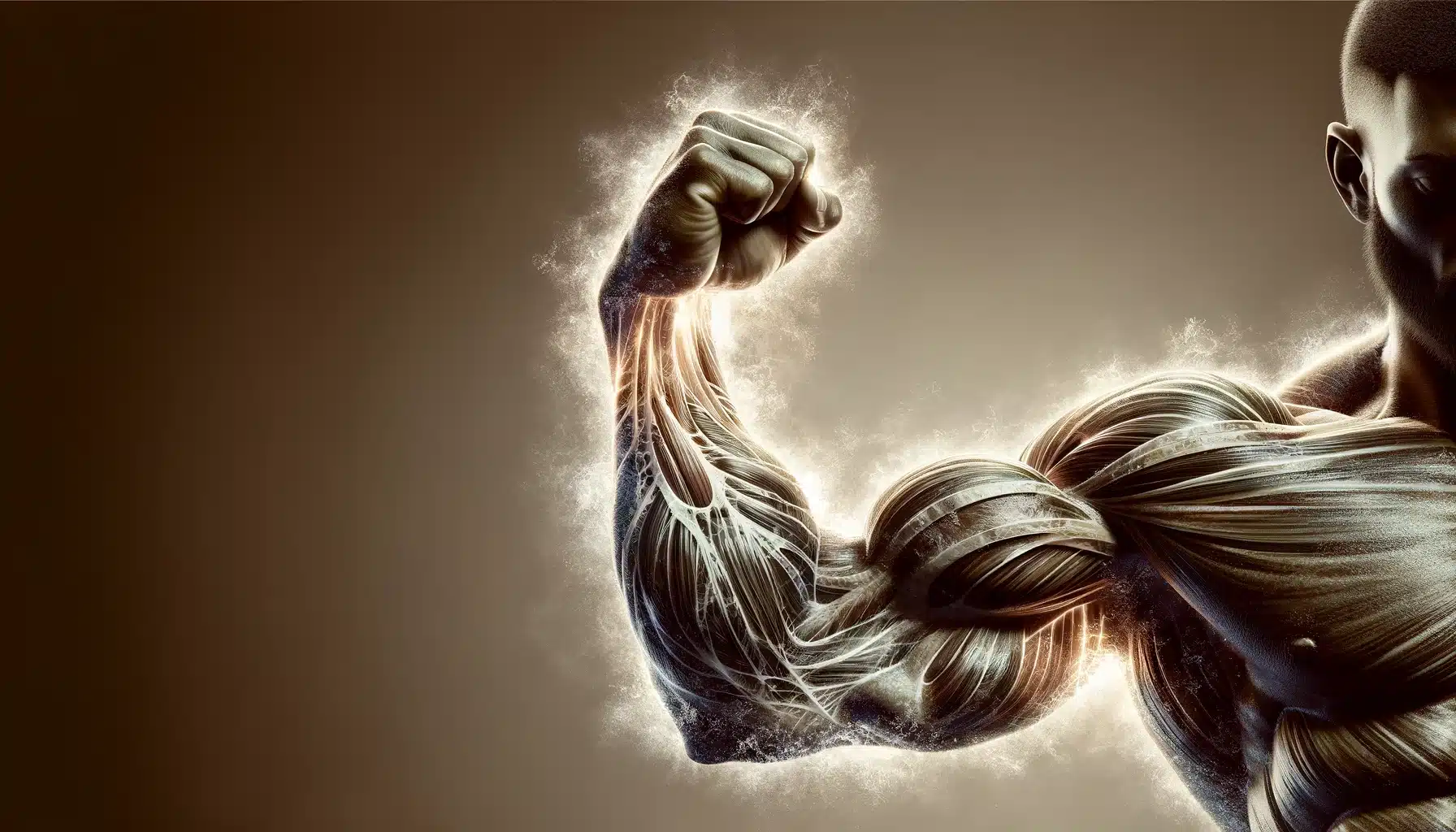Ultimate Anatomy Guide: Everything Arms
Elbow and Connective Tissue Health
The elbow, a crucial hinge joint connecting the upper arm to the forearm, is vital for various resistance-based movements and athletic endeavors. Its primary functions include flexion and extension, enabling complex movements such as throwing, lifting, and gripping. However, the elbow is prone to overuse injuries, particularly tendonitis, due to its significant role in athletic and gym activities. Understanding tissue adaptability is essential for preventing these injuries, emphasizing the importance of balanced strengthening between muscles and connective tissues. Proper form, progression, and rest are imperative to maintain elbow health and prevent pain.

Keen to dive deeper into the Elbow? Our Ultimate Guide has got you covered with all the insider info you need!
Anatomical Insights into the Wrists
The wrist, a complex joint enabling stabilization and rotation of the hand is essential for gripping and fine motor skills. Training the wrist and its surrounding muscles is crucial for preventing common injuries like strains and overuse issues. The carpal bones play a significant role in wrist movement and flexibility. Strengthening the wrists through a combination of stretching and targeted exercises is vital for overall upper limb health and function.

Curious about mastering the Wrist? Swing by our Ultimate Guide for the full scoop!
Forearm Muscles: Flexors and Extensors
The forearm’s intricate network of muscles facilitates hand, wrist, and finger movements. Divided into flexors (anterior) and extensors (posterior), these muscle groups are responsible for the forearm’s dynamic capabilities, including grip strength and fine motor control. Understanding the importance of balanced forearm muscle training is crucial for preventing pain and enhancing overall arm functionality.

Interested in getting to know more about the Flexors and Extensors? Our Ultimate Guide is your go-to resource for all the details!
Brachioradialis: A Key Player in Forearm Strength
The brachioradialis muscle, significant for elbow flexion and wrist stabilization, shines in neutral grip movements. Targeting this muscle can improve forearm size, grip strength, and overall arm power. Training the brachioradialis, alongside other forearm muscles, is essential for optimizing grip, and wrist health, and preventing overuse injuries.

Eager to explore the Brachioradialis further? Check out our Ultimate Guide for everything you need to know!
Brachialis: The Powerhouse Beneath the Biceps
The brachialis muscle, located under the biceps brachii, is pivotal for elbow flexion, working in harmony with the biceps brachii and brachioradialis. Unlike the biceps, the brachialis does not assist in forearm supination but focuses on pure elbow flexion, making it essential for movements requiring forceful flexion. Overlooking the brachialis can lead to muscle imbalances, affecting forearm and entire arm health. Training the brachialis through exercises like hammer curls and reverse curls is crucial for balanced arm development and preventing common arm pains.

Do you have a thirst for knowledge on the Brachialis? Our Ultimate Guide is brimming with insights just for you!
Biceps Brachii: The Icon of Arm Muscles
The biceps brachii, with its two heads (long and short), is renowned for flexing the elbow and supinating the forearm. Training the biceps enhances grip strength and contributes to the overall aesthetic appeal of the arm. The long head, in particular, plays a role in shoulder flexion and abduction, while the short head excels in powerful contractions. To achieve a well-rounded arm, exercises targeting both heads are necessary, alongside workouts for the brachialis and brachioradialis, for comprehensive development and function.

Want to uncover the secrets of the Biceps Brachii? Our Ultimate Guide is the treasure trove you’ve been searching for!
Triceps Brachii: The Foundation of Arm Extension
The triceps brachii, featuring three heads (long, lateral, and medial), is the primary muscle responsible for extending the elbow. Each head has a distinct function, with the long head also aiding in shoulder extension, contributing significantly to the muscle’s mass and overall arm appearance. The triceps are fundamental in pushing and pressing movements, with variations in hand positioning affecting muscle activation. Training the triceps is key for upper body strength, and stability, and preventing tendon pain often associated with heavy or improper training.

Looking to expand your understanding of the triceps brachii? Dive into our Ultimate Guide for the comprehensive lowdown!
Conclusion
The human arm is truly a remarkable creation of nature, showcasing a fascinating combination of bones, muscles, tendons, and ligaments. Each of these elements plays a vital role in enabling the arm to move in a wide range of ways and perform various functions. Whether it’s the elbow and wrists providing stability, the forearm generating force, or the biceps, triceps, and brachialis muscles carrying out specialized actions, the arm is indispensable for our daily activities and athletic pursuits. To develop strength, prevent injuries, and maintain overall arm health, it is crucial to understand the intricacies of this anatomy.
By focusing on balance and technique through proper training, we can enhance performance, boost grip strength, and support the arm’s incredible versatility. Recognizing the significance of every component not only helps us achieve aesthetic goals but also empowers us with functional prowess, highlighting the importance of holistic arm health and wellness.

